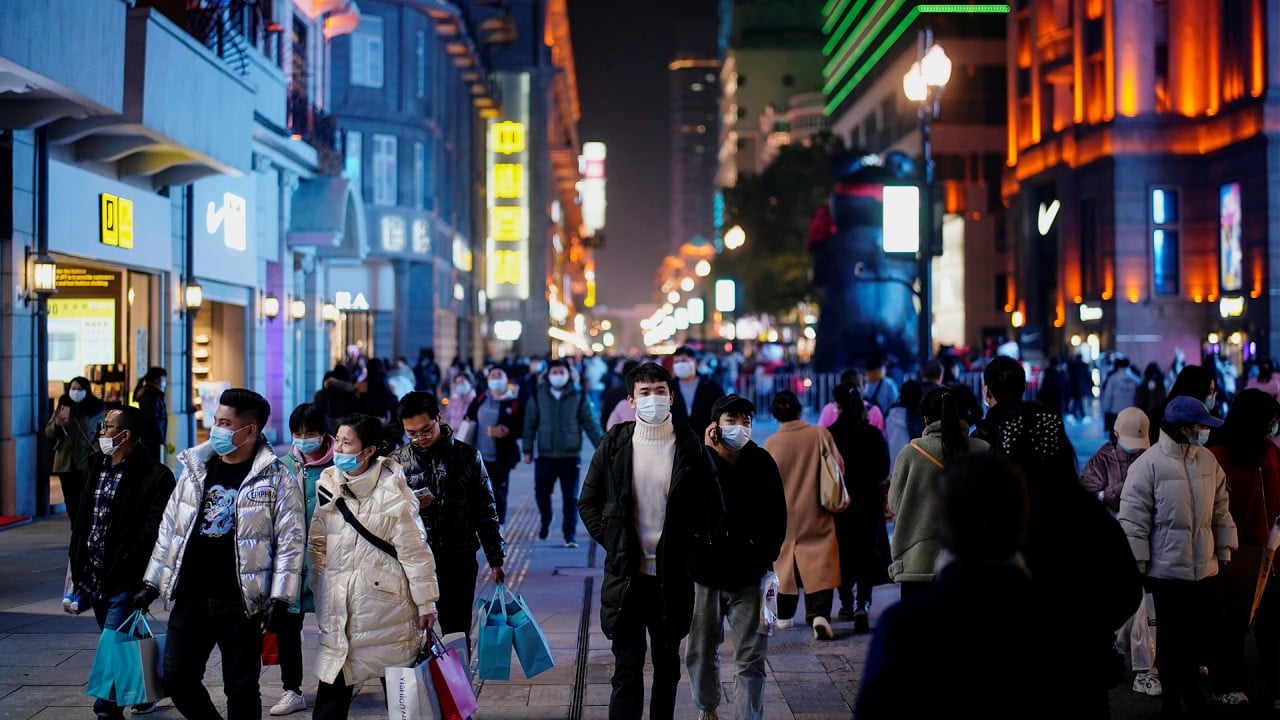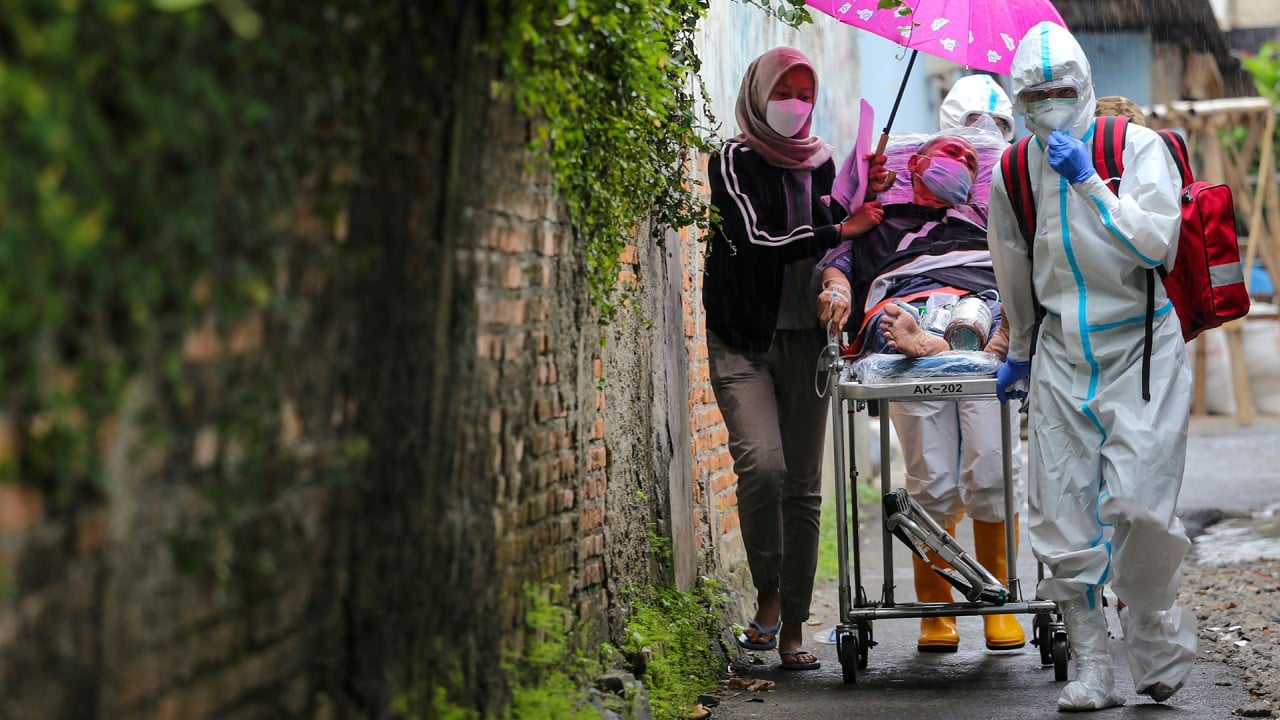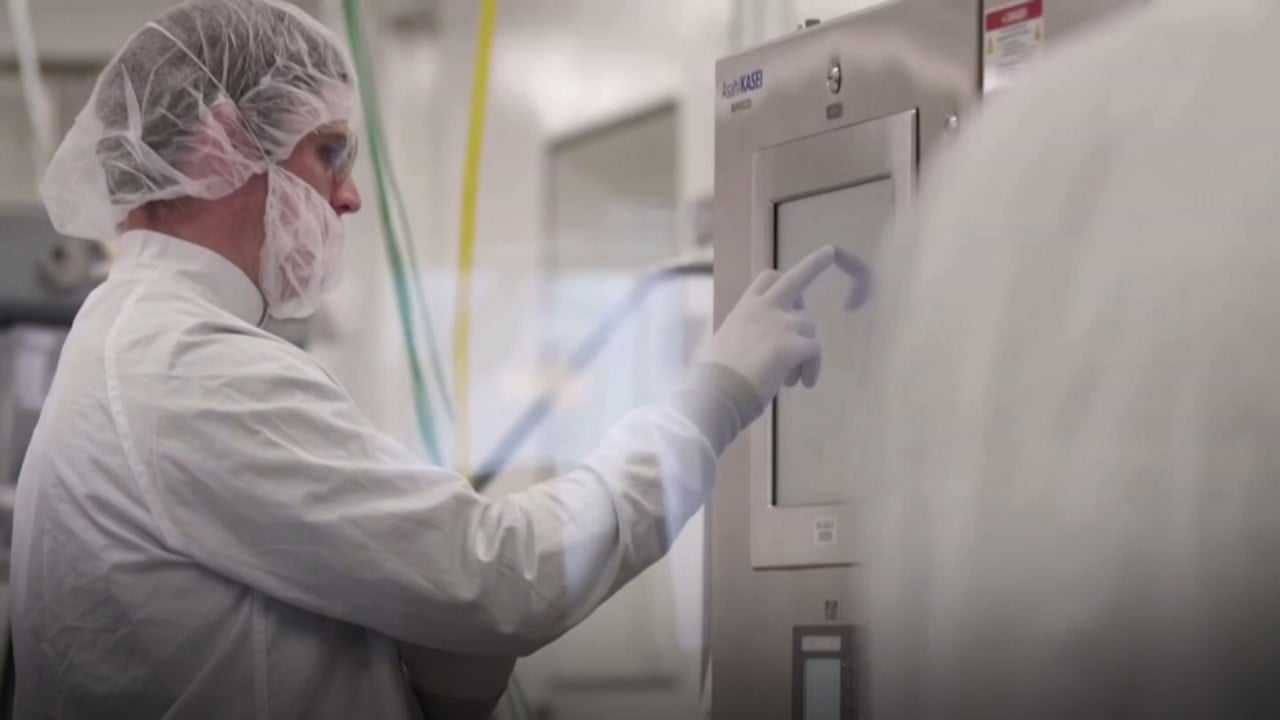
Coronavirus vaccines will save 2021? Not so fast, here’s what the experts think
- This Week in Asia asked five top public-health experts for their reflections on 12 months defined by the pandemic, and their outlook for next year
- While vaccine announcements offer some hope, this isn’t over yet – not by a long shot
JEROME KIM, Director-General of the International Vaccine Institute in Seoul, South Korea

Within a year, we went from an initial report of an unknown respiratory disease in Wuhan, China, to a global pandemic that has infected about 75 million people and killed more than 1.6 million.
But vaccines from Moderna, Pfizer, Gamaleya, AstraZeneca, and perhaps Sinopharm, with two months’ worth of efficacy and safety data, are just weapons in the war against the disease.
They now need to be made in massive quantities and delivered to sites where an army of vaccinators can use them as part of a comprehensive strategy of Covid-19 control.
Prove it, make it, use it – with the proof of concept that vaccines can prevent Covid-19, we are faced with the next two labours, equally daunting, if our ultimate goal is protection of the 8 billion inhabitants of our planet.
Exclusive | WHO’s coronavirus detectives look to Wuhan market as undisclosed map surfaces
The Coalition for Epidemic Preparedness Innovations (CEPI) estimates that global manufacturing capacity for Covid-19 vaccines is between 2 billion and 4 billion doses per year.
It might be 2023-2024 before we can make enough vaccines. Fortunately, the major pharmaceutical companies have licensed or contracted vaccine manufacturing to other companies around the world.
For instance, AstraZeneca has made deals to manufacture its vaccine in Brazil, India, and South Korea. The successful scale-up of globally distributed manufacturing may make 2021 a pivotal year in the fight against Covid-19.
Vaccines must then go from the factory to the hands of vaccinators, and from there into the arms of people at risk in order to impact the pandemic.
Timely global access to vaccine technology is a remarkable achievement and could be an important legacy of the fight against Covid-19. Unfortunately there is a recent report that Covax may be in trouble – let’s hope this is untrue.
The close of 2020 has us, to quote Winston Churchill, at the “end of the beginning”. Next year holds the potential for widespread use of Covid-19 vaccines, the longer-term performance of which will hopefully fulfil the promise shown in the past two months.
There remains a long road ahead, and the opposition is organising – but equipped with vaccines, prevention and global resolve, we have a path to a Covid-19-free future.
PETER C. DOHERTY, Laureate Professor in Microbiology and Immunology at the University of Melbourne, Australia, and joint recipient of the 1996 Nobel Prize in Physiology or Medicine

Both countries are, at time of writing, essentially free of the disease. International public-health thinking has been conditioned by the mantra that “you can’t stop the flu by stopping the planes”.
That thinking was, of course, influenced by the fact that we have effective small-molecule therapeutics (i.e. drugs) that will block any influenza virus infection in its tracks.
These can be given prophylactically to protect front-line personnel, or, if administered early, to limit the progression of the disease. And, if Covid-19 had been “just another flu”, we would have been vaccinating large numbers of people for the past five to six months.
Asian women pay the price of pandemic as Covid-19 ravages economies, jobs
With a totally novel pathogen like SARS-CoV-2, which causes Covid-19, the requirement to ensure human safety and efficacy means that – even with the enormous power of modern molecular medicine that had product development under way from the time the gene sequence was published in January – it still takes about a year to roll out a vaccine.
And the same is true for the highly specific monoclonal antibodies that were used as an emergency treatment for US President Donald Trump.
So that’s what we must do when a rapidly spreading, novel respiratory virus infection emerges anywhere across the planet: stop the planes! Locally, then, if that doesn’t work, globally.
And, when it comes to pre-emptive action, we need to move forward fast with the development of new virus-class-specific drugs that – paralleling the situation for influenza and for HIV/Aids – will work against all the coronaviruses (CoVs). Intensive research over the past three decades has shown us that there is a massive reservoir of CoVs in bats.
China’s coronavirus vaccines: is Southeast Asia ready to trust them
With only two CoVs – both causing common colds and croup – crossing over into the human population before the year 2000, the first two decades of this century have seen five new CoVs infecting people, with three now established globally, including SARS-CoV-2.
Being able to protect and/or treat people with a cocktail of broad-spectrum antivirals – more than one is needed to limit mutations – for the CoVs is the best prophylactic and therapeutic strategy we can develop.
And we should also be considering a parallel strategy for the paramyxoviruses, especially the henipaviruses (Nipa and Hendra), and the filoviruses (Ebola and Marburg) that can jump across from bats to humans. Science protects us, and that science is feasible.

02:27
Coronavirus: French President Emmanuel Macron tests positive for Covid-19
HSU LI YANG, Vice Dean of Global Health and Programme Leader of Infectious Diseases at the NUS Saw Swee Hock School of Public Health, Singapore
This year has been dominated by the Covid-19 pandemic, with major disruptions to life and society. The pandemic continues to rage on in most countries, particularly those at the onset of winter.
Several factors account for Singapore’s success, and these have been reiterated often. The country is small and technologically advanced. It has an excellent public health system and public administration.
The population is generally collectivist and has a high trust of the government. Preparations for major outbreaks and pandemics have been ongoing since the severe acute respiratory syndrome (Sars) epidemic in 2003.

A whole-of-government approach to crises meant that other socioeconomic issues were pre-empted and addressed early, in addition to health care capacity and needs – including financial support for workers and companies, as well as sourcing for food and other essentials, as supply lines were affected by Covid-19.
Nonetheless, the huge outbreak among migrant workers – leading to a lockdown of their dormitories and work stoppage for over four months – exposed the inequities most in Singapore were blind to, and is a considerable blemish on its record in managing the pandemic.
Looking forward to 2021, issues of vaccine availability and distribution is likely to predominate. Even understanding the limitations – that not everyone can or will want to be vaccinated; a small proportion, particularly those who are elderly and most vulnerable to the virus, may not mount an immune response to the vaccine; and the duration of protection remains unknown – it is difficult to escape from the idea that a reset to a new normal that more closely resembles the pre-pandemic era will be dependent on the success of the Covid-19 vaccines.
Malaysian women, children bear brunt of coronavirus lockdown
The objective likelihood is that these vaccines will only become widely available – and not just in high-income countries – by the second half of 2021, so perhaps most of next year will be largely similar to this current period of continued physical distancing, travel restrictions, contact-tracing apps and use of face masks in public spaces.
Reflecting on the pandemic, perhaps humility and gratitude are the two words that sum up the experience. Clearly, many – including myself – have overestimated the global capability for preventing or controlling viral pandemics, despite great leaps of technological and scientific advancement since 1918.
Nonetheless, it is this same technological and scientific advancement that has led to an unprecedented speed in sharing experiences, data and coming up with solutions to different aspects of the pandemic. We must also work towards eliminating the inequities that allowed the virus to flourish.
RAINA MACINTYRE, Head of the Biosecurity Research Programme and Professor of Global Biosecurity at the Kirby Institute, University of New South Wales, Australia

In terms of what Australia did well, the decision to close international borders in mid-March stands out, particularly after the WHO consistently and from early on said border closures were not necessary.
In the first wave, the majority of Covid-19 cases in Australia were return travellers, and we had voluntary home quarantine that was regularly being breached – so the decision to use hotel quarantine was also implemented, which has been another important measure.
We saw the epidemic peak and start to fall exactly two weeks after the borders were closed. This allowed us to control the pandemic within our borders, even the second wave in the state of Victoria in July.
The mistake made there was the failure to recognise the need for public health surge capacity, particularly the need to swiftly trace thousands of contacts, even though Australia did well with increasing intensive care unit and ventilator capacity by more than 100 per cent in March.
Sadly, that lesson does not seem to have been learned – in the state’s latest budget announcement there was no funding for expanding public health workforce capacity. I do not think this lesson is well understood anywhere, but some states have better-resourced health systems than others.

07:07
The places that successfully contained Covid-19 and why others are not following their lead
It is very good news that we have effective vaccines, and many more in development. With a vaccine of 90 per cent efficacy, we would need about 70 per cent of the population vaccinated to achieve herd immunity and stop transmission.
At this stage, with no trial data on children, vaccines will initially only be for people 18 years and over, which means the majority of adults will need to be vaccinated if no children are vaccinated to achieve 70 per cent coverage – and that is unlikely.
We also have no national goal for herd immunity at this stage, which is a concern. I believe we should be aiming for herd immunity and planning accordingly.
So it is likely if the status quo remains, vaccination coverage will rise slowly and may reach 30-50 per cent over a period of a year or much longer, and we will be living with Covid-19 for a long time. If, however, we aim for herd immunity and do our best to get enough high-efficacy vaccines, we could eliminate the disease.
Low-income countries will probably end up getting the Oxford-AstraZeneca vaccine, which showed 62 per cent efficacy in its most recent trial, as high-income countries will scramble for high-efficacy vaccines.
This means transmission of Covid-19 will continue in low-income countries that either cannot vaccinate enough people or have a lower-efficacy vaccine, and hotspots of the disease will remain in the world for some time to come.
The high levels of vaccine hesitancy in the US means it is unlikely to achieve high enough vaccination rates for herd immunity any time soon.

03:58
Poor countries said to be left behind in Covid-19 vaccine race as rich nations get first doses
One thing that surprised me in 2020 was the utter failure of many Western democracies to control Covid-19. There has been a rather patronising attitude in the West – reflected in measures such as the Global Health Security Index – that only fragile states and low-income countries will do badly in a pandemic.
What we saw was the opposite, which proves that money, technical know-how and scientific knowledge do not guarantee good pandemic control. Culture and leadership matter too. Cultures which are more civic-minded and obedient of public health orders have done better. In that way, Australia is more like many Asian countries than the US or Britain.
We tend to trust the government and do what they say. We have seen the dire outcomes of poor leadership in the US, where leaders have peddled unscientific theories, miracle cures and actively discouraged good public health management, while basic public health measures such as masks and vaccines have been politicised.
A final point, as someone who has worked in the pandemic field for 28 years, is that I believe we have seen a gradual hijacking of pandemic planning and expert groups around the world since the 2009 swine flu pandemic by people without the requisite qualifications or knowledge of public health epidemic control.
When people with some relevant knowledge in infectious diseases but no understanding of epidemic control fill these expert committees, it’s a bit like putting an air traffic controller in charge of flying the plane.
This has resulted in unscientific theories and poor management being pushed in many countries by supposed expert groups – such as the herd immunity by natural infection theory, which seems to have started in Britain. Just like aviation, health is a vast field.
But in infectious diseases there are many different areas of expertise. Like aviation, each area is equally critical, but if you have one doing the job of the other, accidents will happen.
MICHAEL KINCH, Associate Vice Chancellor and Director of the Center for Research Innovation and Business at the Institute for Public Health, Washington University in St Louis, US

This year will burn in our collective memories, perhaps for centuries to come. It will be remembered for great achievements as well as abject failures, both of which reflect the importance of leadership.
The failures are more obvious. Though possessing the exceptional Centers for Disease Control and Prevention, the United States was seemingly caught unawares. Diagnostic testing was delayed and, throughout the year, unable to keep pace with the virus.
This dismal response reflected a denial to acknowledge a pandemic under the presumption that an economic slowdown would derail an electoral lead. In a true sense of the word, this perception was ironic as a forceful and forward-looking response and strong presidential leadership would have guaranteed the election to the incumbent.
Instead, the combination of high-level denial and inaction, exacerbated by growing political polarisation, ensured the suffering and deaths of countless Americans.
Yet this was also a time of tremendous positives. While the US faltered, other nations were quick to see the dangers of the pandemic and to gain or mandate measures meant to control the virus. These actions proved useful, though the dreaded “second wave” in the autumn did provide a setback for many European nations.
Despite these obstacles, 2020 captured some of the greatest human achievements ever witnessed. Although the pandemic was not recognised, at least publicly, until late December last year, the virus had been identified and fully sequenced within a month, a scientific achievement that would presage more impactful outcomes.
This detailed knowledge of the pathogen would enable diagnostics to save countless lives. Moreover, this work allowed investigators around the world to discover or repurpose therapeutic and vaccine candidates.

03:13
World gears up to distribute Covid-19 vaccines as drug makers await medical regulator approvals
An unprecedented blend of international scientific cooperation and regulatory nimbleness also witnessed the first glimmers of hope in countering a deadly pandemic. Before the end of the year, the antiviral armamentarium included cutting-edge, though pricey, monoclonal antibody therapeutics complemented by repurposed and affordable steroid therapeutics.
Looking forward, both in the literal and figurative sense, 2021 offers both an incredible opportunity and challenge. The discovery of a new vaccine, which normally requires more than 15 years of clinical research alone, was accomplished in half as many months.
The two leading vaccine candidates from Moderna and Pfizer appear safe and surprisingly effective, though logistical challenges undoubtedly will challenge an efficient roll-out.
Nonetheless, a successful global deployment, which is likely to be buoyed by new and forward-looking leadership in the US, provides a new hope for the coming year.

